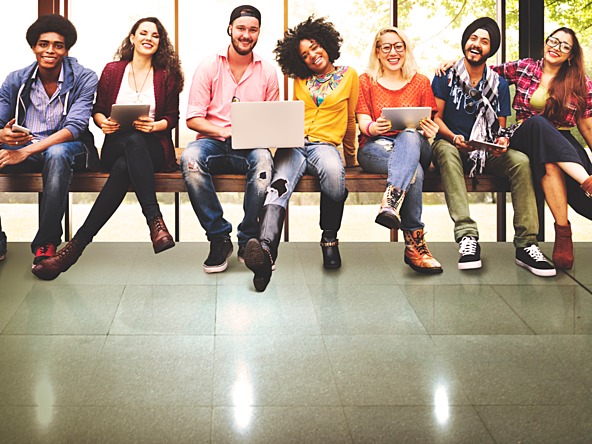The method is the message in youth cultural insight

When we conduct research, what are we really trying do? It might seem like an obvious question, but it’s one that research professionals and the brands we work for don’t always take enough time to ask.
Constrained by tight timelines, and often even tighter budgets, it’s easy to default to an established order or rubric: we ask questions to understand why consumers do what they do and want what they want. But for some groups of consumers – particularly young people – this approach only superficially scratches at the surface.
At its core, when we engage in the pursuit of cultural insight, we’re doing so to delve beneath the surface – to understand the world, both at a micro and macro level, in a way that we had, perhaps, been blind to before. Part of the goal with this type of work is to find an antidote to the pervasive ‘say-do’ gap that plagues much consumer research by going beyond what is ‘said’ to explore ‘unsaid’ motivations and contexts that drive decisions.
In the mid-1960s, media theorist Marshall McLuhan coined the phrase “the medium is the message”. In doing so, he argued that the format, rather than the content itself, should be the primary focus of study. Whether it was newspapers, radio or television, the medium, he argued, ought to reveal more about the world we live in than the content or messages it carried.
In our case, if we extend McLuhan’s paradigmatic statement to the field of consumer and cultural research, his ‘medium’ becomes our ‘method’. Here, positioning the ‘method’ as the ‘message’ opens up a new way for us to interrogate the work that we do.
Put simply, when it comes to youth cultural insight, the answer lies in shifting to ‘doing’ rather than merely ‘asking’.
In context
For brands to understand the cultural context in which they’re operating, gathering groups of young people and talking to them while they take part in creative exploration sessions – from making music to designing clothing – can elicit more genuine conversations and insight while helping participants to feel more involved in the project. This may be a more time-consuming approach, but the results can be significant.
Rather than asking young people what broad cultural topics might mean to them, or trying to uncover what brands they have an affinity to, a shift in approach is needed. One where research participants and researchers are invited to explore these themes through making and doing – with the actual process being set-up as an opportunity for co-creative exploration and experimentation. In this sense, and as with many ethnographic methods, the ‘medium’ becomes the ‘message’; the ‘process’ of discovery becoming the ‘discovery’ in-and-of itself.
This approach is undoubtedly more time-consuming than working with conventional recruitment partners to conduct conventional focus groups. It will often involve carefully ‘casting’ young people with the direct assistance of locally engaged interlocutors, making sure that everyone is engaged, energised, and appropriately compensated for their time and ideas. Furthermore, it’s important that young people feel ownership over what they create and research conducted in this way should never be a backdoor route to mining concept ideas for which the participants receive no credit. If they make music, the music should always be theirs to release in whatever way they choose.
By setting up research in a more structured manner, we force young people to engage with their world on our terms. Instead, flipping the script allows us to connect at eye-level, helping an already sceptical generation to buy into the entire research process. In doing so, researchers and participants become partners in the pursuit of deeper insights – ultimately leading to richer, more textured, understandings of how young people navigate the world. At the same time, this process elevates outputs from two-dimensional notes in decks that get filed away to something more real, tangible and expressive.
We are all conducting research during a time when global brands are increasingly concerned with the rather nebulous term ‘purpose’. As strategy teams seek to build purpose-driven businesses, why should this not also extend to research and cultural insight methods?
The established dynamics of research are such that young people are often positioned as sources of information or participant subjects from which insights can be extracted. Might we instead view them as collaborators? What about co-creators? Might we not engage them in a mutually beneficial process beyond simply the exchange of ‘information’ for ‘money’? Providing young people with the space to create not only allows us, as researchers, to see the world through a different lens, it makes the research process itself constructive and valuable for the young people we’re trying to understand in the first place.
Ultimately, to return to the central question: what are we really trying to do when we conduct research? If the answer is to extract information – then maybe tried and tested methods ‘get the job done’. But if the answer is to peel back the layers of culturally constructed meaning to challenge pre-conceived notions of how others view, understand and navigate the world, then, maybe, our research methods are the message after all.
Josh Proctor is head of cultural insight at Jump Innovation and Jump Culture Studio

We hope you enjoyed this article.
Research Live is published by MRS.
The Market Research Society (MRS) exists to promote and protect the research sector, showcasing how research delivers impact for businesses and government.
Members of MRS enjoy many benefits including tailoured policy guidance, discounts on training and conferences, and access to member-only content.
For example, there's an archive of winning case studies from over a decade of MRS Awards.
Find out more about the benefits of joining MRS here.












0 Comments